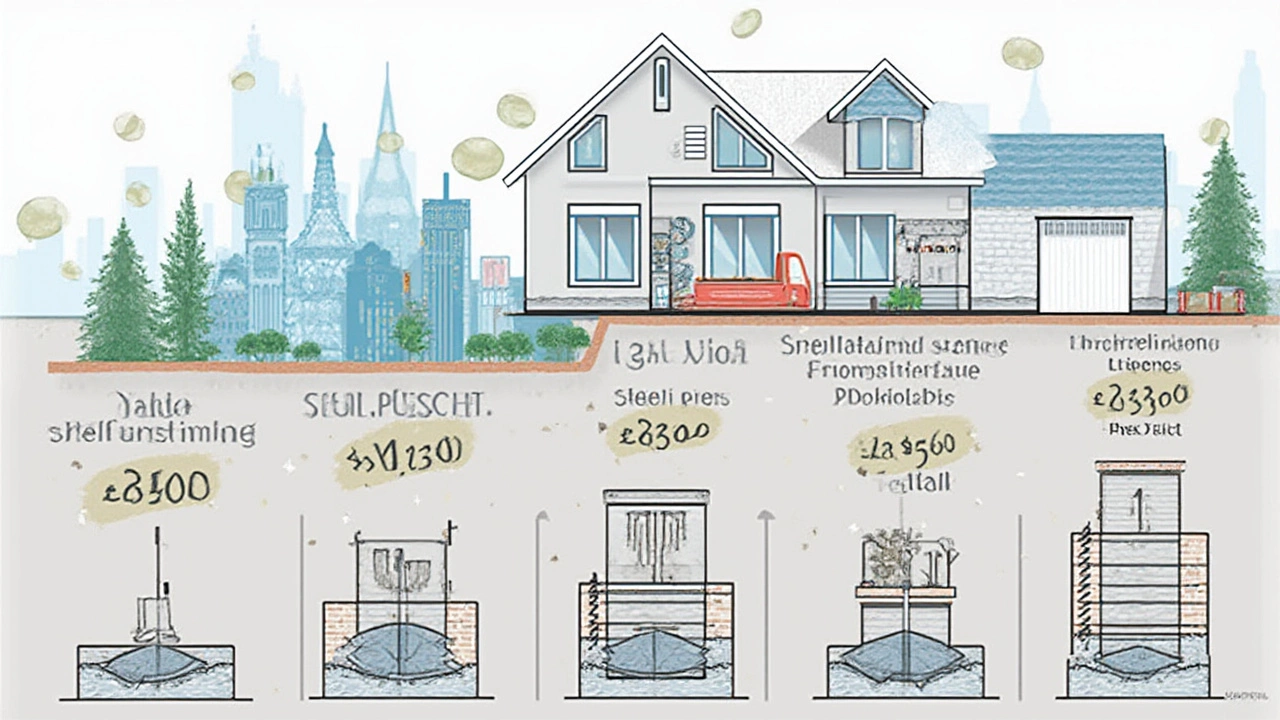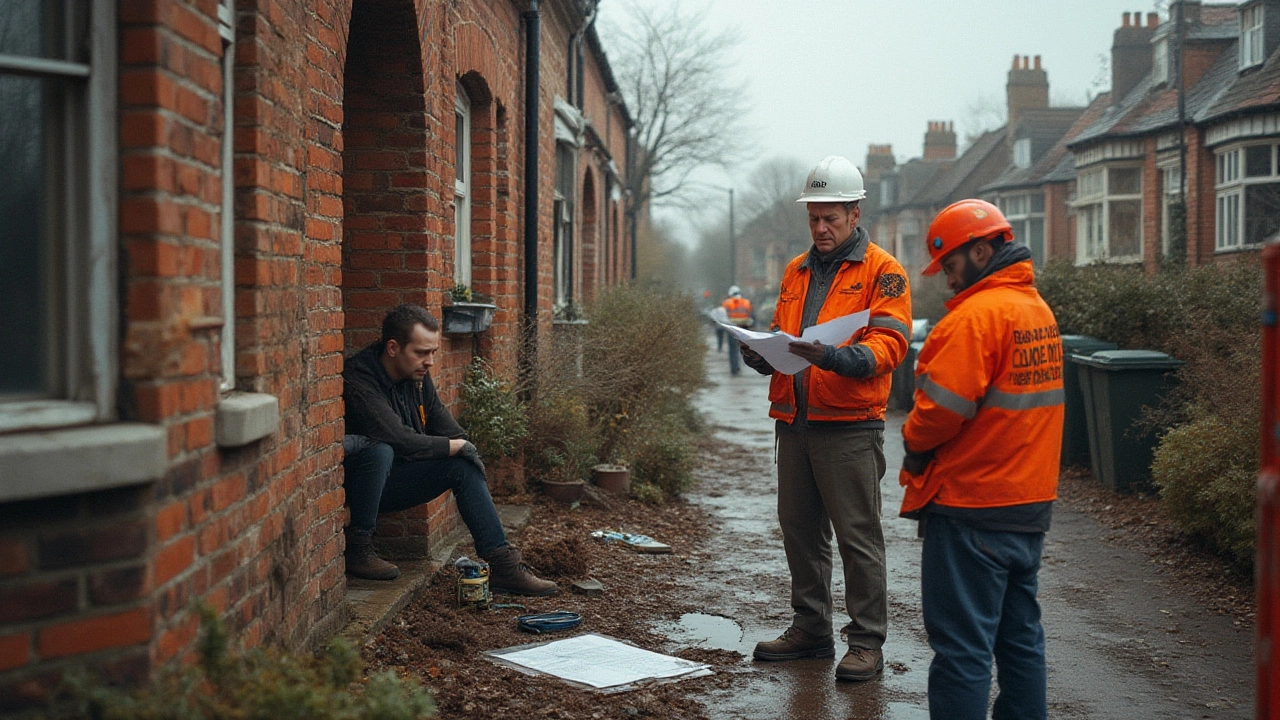Picture this: you come home after a long day, only to notice an ugly new crack jagging its way up your living room wall. Your doors won’t close right. Your floors slope a little more than you remember. When you Google what’s happening, you find out you might need major foundation repair—and the costs can shoot sky high, depending on what’s wrong under your feet.
Most people think foundation problems only hit in old houses or flood-prone areas, but trouble can strike almost anywhere. Drought, plumbing leaks, poor drainage, and even just crummy soil can eat away at your foundation, and fixing that damage can gobble up your savings fast. If you want to know which foundation repair is most expensive—and what’s really worth the money—let’s get into the details that can spare you some pain (and lots of cash).
What Makes Foundation Repairs So Costly?
Not every foundation fix will drain your bank account, but some methods top out at the price of a new car. Why is that? Well, for starters, everything beneath your house is tricky to reach, and opening up any part of it creates a domino effect of problems that needs careful handling. Getting to the root of the bad soil, lifting a house, and making it stable for the next few decades? That gets complicated—and labor isn’t cheap.
The type of foundation you have (slab, crawl space, pier and beam, or basement) sets the baseline for what you might pay. But extensive damage from shifting soil or erosion pushes the job into the 'expensive’ category. Repairs might mean digging up your yard, tunneling under your house, or even bringing in special machines that can lift and support entire sections of your home. Here’s a quick look at the average and high-end costs you’ll find around the U.S.:
| Repair Type | Average Cost | Maximum Cost |
|---|---|---|
| Minor Crack Repair | $500 | $2,500 |
| Leveling (Mudjacking) | $2,000 | $8,000 |
| Steel Piering / Underpinning | $10,000 | $60,000+ |
| Concrete Piers | $7,000 | $21,000+ |
| Complete Foundation Replacement | $25,000 | $100,000+ |
So, what sends a repair cost spiraling into those five-digit ranges?
- The size and weight of your home. Two stories? Add more.
- The kind of soil and how hard it is to dig or tunnel.
- Accessibility—think narrow yards, additions, or obstacles.
- Local labor and materials costs (cities typically cost more).
- The severity of the damage—simple cracks vs. structural collapse.
- Special engineering requirements for historic or unusual homes.
Tackling a major repair often means engineers, city permits, heavy equipment, and teams of workers. Each of these adds to the bill. People sometimes try to skimp and patch over the cracks with cosmetic fixes. That’s a shortcut that almost always backfires—delaying the real repair means you’ll likely end up paying much, much more down the line. Soil movement rarely stops on its own, especially in states like Texas, Oklahoma, and California, where everything from droughts to earthquakes keeps moving homes around like chess pieces.

The Big Ticket Repairs: Piering, Underpinning, and Foundation Replacement
The hands-down most expensive foundation repairs involve piering (also called underpinning), or flat-out replacing the entire foundation. These aren’t quick jobs. Contractors dig deep—literally—to stabilize or rebuild what’s under your house. If your contractor mentions any of these options, you know you’re in 'wallet pain' territory.
Steel Pier Foundation Repair: When your foundation is sliding or sinking, steel piers are driven down to bedrock or stable soil. Workers first dig holes beside the foundation—sometimes both inside and outside the house—then push long steel tubes down until they hit really solid ground. After that, hydraulic jacks lift the home and transfer its weight. Materials and heavy machinery don’t come cheap, and neither does the skill needed to avoid further damage. People see bills as high as $60,000 or more for big houses or especially deep installations.
Concrete Pier Foundation Repair: This method works a bit like steel piering, but instead of metal, contractors use poured concrete piers to anchor your home. Each pier takes time to cure (up to a week), and excavating for them leaves a mess in your yard. Concrete piers are often chosen for lighter homes or places where hitting deep bedrock isn’t realistic. Costs usually run a bit lower than steel, but for a large project, expect to pay $7,000 to $21,000—and sometimes beyond that. If you need dozens of piers or your foundation is especially tricky, the numbers climb fast.
Helical Piers: These are huge steel screws twisted into soil beneath your foundation, ideal for lighter loads or places with soft, unreliable ground up top. Installing them takes less time than concrete options, but the technology and steel still push prices way up. People love them for decks, additions, or lighter ranch-style homes, but you’re still looking at $10,000 to $30,000 as an average range.
Foundation Underpinning: Sometimes, homes start to settle unevenly. Underpinning means digging out sections under the foundation and adding piers, piles, or concrete to support and 'lift' back into place. Think of it like setting your house on new legs. This is a precise, complex process—engineers often design the fix. You’ll commonly see bills from $10,000 to $50,000, depending on the length and type of wall being underpinned. Skimping here? Not an option. Anything less than perfect just leads to a repeat performance.
Full Foundation Replacement: This is the nuclear option, but sometimes it’s the only thing that works. When a foundation is crumbling, heaving, or was built completely wrong, contractors may have to support your entire house on temporary steel beams, jack it up, and dig out the whole foundation structure. This process is noisy, messy, and takes weeks or months. Expect totals around $25,000 to $100,000 or even higher—especially if you’re in a pricey city or your house is huge. Full replacements are rare, but very old homes, severe earthquake cracks, or botched earlier repairs sometimes leave no better choice.
Each of these jobs has its own laundry list of complications—relocating plumbing lines, rewiring, even replacing landscaping or driveways—that can push costs further north. It’s never just about the foundation alone.

Saving Yourself from Sticker Shock: Prevention, Smart Choices, and Warning Signs
So, what can you actually do? No one wants to stare down a five-figure repair bill. The key is catching problems before they go nuclear. You’d be amazed at how many disasters start as small things—a door that sticks, a minor wall crack, or a little water leaking after rain. These are red flags. If you ignore them, you’re inviting the sort of issues that only a steel pier can fix.
Here’s the shortlist of warning signs that should get your attention:
- Cracks wider than 1/4 inch in walls, floors, or around windows
- Doors or windows that suddenly jam or stick, especially on one side
- Floors sloping or feeling bouncy
- Visible gaps between walls and ceilings or floors
- Chronic dampness in basement or crawlspace
- Exterior bricks, stone, or siding pulling apart
If you spot any of these, book a professional inspection—preferably with a structural engineer, not just a regular contractor. Expect to pay $500 and up, but that’s nothing compared to a six-figure fix. The earlier you get a diagnosis, the more repair options you’ll have—and the less you’ll spend.
Thinking about buying a home? Always get a foundation inspection if you even suspect trouble. In market hotspots like Dallas or Los Angeles, a foundation problem can easily make or break a deal. Sellers sometimes mask issues with clever paint jobs or cosmetic repairs, so pay close attention.
Want to protect your house going forward? Here are a few tried-and-true tips:
- Keep your soil moisture stable. Water foundation-adjacent soil in dry months and watch drainage during heavy storms.
- Direct all gutters and downspouts at least 6 feet from the foundation.
- Don’t plant large trees too close—roots can push and pull with every season.
- Don’t ignore plumbing leaks. Underground water is a prime culprit.
- Tackle minor cracks fast with epoxy injections—don’t let them grow.
If you’re already budgeting for a big job, gather at least three bids, check reputations, and insist on detailed proposals. Great contractors will explain the fix, document every cost, and offer real warranties—sometimes up to 25 years or even lifetime guarantees (for as long as you own the home). Rushed or vague quotes almost always spell trouble.
It’s also smart to check for insurance or grants. Homeowners insurance usually doesn’t cover regular foundation settlement, but it may help if you have sudden damage from plumbing leaks or covered perils. In some cities with chronic clay soil movement (like Houston), local agencies may offer low-interest loans or assistance for foundation repairs. Don’t forget about home warranties if your house is nearly new—sometimes, they kick in for obvious builder errors.
Most expensive foundation repairs—like steel pier installation or total replacement—are lessons in why ignoring small problems can eat up your savings. It’s not just about fixing what’s broken, but about doing it right for the long term, with the right plan and the right people. Once you know what’s really at stake under your home, spending early to fix a little problem can save you from the kind of repair that makes headlines in the bad way. Treat your foundation like what it is—the thing that holds everything else up. Cut corners here, and the whole house feels it.
